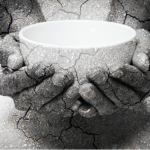Living in areas of concentrated poverty, as well as stress levels, could be two mechanisms involved, he said. Researchers found that there was a significant difference in SLE damage accrual between those who were poor living in areas of concentrated poverty and poor patients not living in areas of concentrated poverty. Being poor and reporting high stress also was linked to higher damage accrual, they found. Furthermore, those living in poverty are about twice as likely to experience high levels of stress—66% to 37%.
“Reducing damage in lupus may require efforts to reduce the stresses associated with poverty,” Dr. Yelin said. “For example, advocating for an increased level of economic assistance and social services, including means to leave areas of concentrated poverty through housing vouchers.”
Thomas Collins is a freelance medical writer based in Florida.
Miss Any of These Important Sessions?
If you missed any of these important sessions, find them on SessionSelect.
References
- Gensler L, Reveille J, Lee M, et al. High dose nonsteroidal anti-inflammatory drugs (NSAIDs) and tumor necrosis factor inhibitor use results in less radiographic progression in ankylosing spondylitis—a longitudinal analysis [abstract 1956]. Arthritis Rheumatol. 2016;68(suppl 10).
- Vargas-Santos AB, Peloquin C, Zhang Y, et al. No increased risk of chronic kidney disease with allopurinol use [abstract 1957]. Arthritis Rheumatol. 2016;68(suppl 10).
- Yelin E, Yazdany J, Trupin L. Effect of poverty status in 2009, % of year in poverty between 2003 and 2009, and existing poverty permanently by 2009 on SLE damage in 2015 [abstract 1958]. Arthritis Rheumatol. 2016;68(suppl 10).


